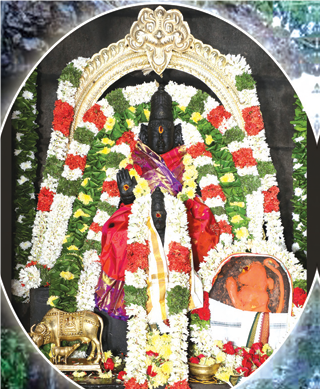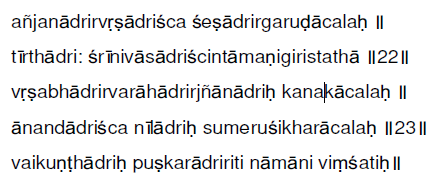Table of Contents
ToggleAnjanadri in Tirumala was the Birthplace of Hanuman.
Devotional beliefs in Hanuman have been around for thousands of years, both in India and abroad, especially in Southeast Asian countries.
In North India, devotion to Hanuman is as important as devotion to Rama. It is no exaggeration to say that the fame of Rama Charita Manas, written by Sri Tulsidas in North India, is as great as that of Sri Valmiki Ramayana despite so much devotion in South India. Hence those who have not recited Sri Hanuman Chalisa are very rare.
Yet, few devotees pay much attention to the birthplace of the famous Hanuman. If we take into consideration the folklore of different places and the popular beliefs of local people, five places claim to be the birthplace of Hanuman.
- the locals of the Dang area of Navsari district in Gujarat,
- the locals in Gumla in Jharkhand,
- some in Kaithal (in Kapisthal) in Haryana,
- some in Anjaneri near Nashik and
- some in Kishkinda near Hampi in Karnataka claim that Hanuman was born in their respective places.
Tourists who have visited these places believe that Hanuman’s birthplace is the very place which they have visited. But soon after reaching their homes, they forget all about it. There is no evidence other than folklore for these five places.
Sri Venkatachala Mahatmyam
Unlike all these, there are a great number of references to Anjanadri in Tirumala, as the birthplace of Hanuman in the Puranas, in the Sri Venkatachala Mahatmyam (An anthology of the accounts of Sri Venkateswara and his popular hills found in various Puranas), in the devotional literature, in the psalms of the Sankirtanacharyas, and in the Agamas.
All these references can be divided into three ways.
- Some references say that Anjanadri is one of the Tirumala Hills known as the Sri Seshachala parvatas (hills)
- Some other references say that Anjana Devi performed penance for the sake of a son here on this hill and
- Some other sources say that these hills of Srinivasa are the birthplace of Hanuman.
In an attempt to examine these evidences, it should be noted how the accounts are found in the Anjanadri case. Anjanadri is unequivocally mentioned several times in the North Indian and Southern editions of the Skanda Purana among all the 18 Maha Puranas.

Anjana Devi - Tirumala
Sri Venkatachalakshetra Mahatmyam
Sri Venkatachalakshetra Mahatmyam an anthology of 12 Puranas was brought together and printed under the title Sri Venkatachalakshetra Mahatmyam. Texts such as the Srivenkatachaletihasa Mala say that the book has been revered before the time of printing, dating back to the times of Srimadramanujacharya.
Sri Venkatachalakshetra Mahatmyam was first published in 1929 by Sri Swami Mahanta Sri Prayaga Das Varyula of Calcutta. It was printed under the editorship of Pandit Sri Kesari Kant Sharma and Pandit Sri Lakshmidhara Pathak.
All scholars agree that a part of the Skanda Purana and a part of Srivenkatachalakshetra Mahatmyam are the same with that found in the Independent Text of the Skanda Purana, and hence an inference can be drawn that the rest of the Eleven Purana selections of Sri Venkatachalakshetra Mahatmyam are also standard.
While considering the evidence available in this order, Sri Vedanta Desika’s works, the works of poets like Sri Venkataadhwarin, the devotional songs of Annamayya, Purandaradasu, Tarigonda Vengamamba and the stotras in the Agamas are of great significance.
The name Anjanadri is often heard in Sri Venkateswaraswamy’s Sahasranamavali, Sri Venkateswara gadya and other bunches of prayers.

Anjanadri
Anjanadri is the first of the famous names of Sri Seshachalam or Srivenkatadri mentioned in the above verses of the Brahma Purana. Here in this context, some scholars say that these verses are to be doubted as only 16 out of 20 names are found in these verses but say that Iti Namani Vinsati (Thus these are the twenty names).
However, these are not the hymns written in modern times for the moderns. Hymns coming in the series. These four names might have disappeared through centuries of years before the sacred text was published.
Also, two contexts are exemplified by the Padma Purana. Among those who visited Sri Venkatachala was the foremost Maharshi Srisuka. He referred to it as Anjanagiri and Anjanachalam in the context of saying that he drank the waters of Swami Pushkarini while he had the Darshan of Sri Padmavati Ammavaru in Tirushukanur (present-day Tiruchanur) and saw the beautiful Sri Venkatachaladivya Kshetra from there. This is something to be noted.
Also in the context of being described as Narayanadri, he says that the mountain is called Anjangiri and that there is a Swami Pushkarini in the Anjangiri basin and explains the virtuous effects on those who bathe there. The sage Suka reached Anjanadri through its steep slopes, bathed in the streams of holy water there, and wandered with devotion through the foothills.
The sage Vyasaputra bathed there for three days and stayed for three days with Upasana. He wanted to see the surprises in that Anjanachala.
In Narayanadri’s description
That ancient place is similar to the lights of the rising sun on the hilltop of Anjanagiri. Those who bathe in Swami Pushkarini in such Anjanagiri will find success in their deeds.
The story of Hanuman’s birth is most extensively described in chapters 39 and 40 of the Vaishnava Khanda in the Skanda Purana. As examined from different places it is found in all the North Indian and South Indian copies of the Skanda Purana. As stated there, the birth of Hanuman took place at Akashganga in this Venkatadri itself. Hanuman was born here due to the penance of Anjanadevi at the suggestion of Matanga Maharshi and hence the name Anjanadri came to this mountain due to the blessing of Brahma.
Here is one thing we have to note. According to this Skanda Purana, Anjana Devi’s father is a demon. He had great strength and prowess. His name is Kesari. Her husband is a Kapi warrior. His name also is Kesari. This can be seen in the said texts in the following contexts.
“O great man! Matangamaharshi! My father was a monster named Kesari. He is a devotee of Lord Shiva.” (Skanda Purana - Sri Vaishnava Khanda 39-4 to 6)
Then a monkey named Kesari asked her father to offer Anjana as his wife. The generous father offered his daughter Anjana to the heroic Ape king Kesari and gifted him millions of cows, one lakh elephants, tens of thousands of horses, chariots, many garments, thousands of slaves, and thousand garments. (Skanda Purana - Sri Vaishnava Khandam 39-10, 11 verses)
The same thing is said in the Brahmanda Purana part of Sri Venkatachala Mahathyam.
Brahmanda Purane Tirthakhande Bhrigu Narada Samvade 54 Shloka
Kesari, a demon, was very famous in the Third Age.
Brahmanda Purane Tirthakhande Bhrigu Narada Samvade 68 Shloka
When the demon Kesari’s daughter, who was born by the gift of Lord Shiva became a teenager, a Noble Ape named Kesari asked her father to marry her to him. They were married with the consent of her father.
Thus in these two Puranas (Skandam is an independent Purana. The Brahmanda Purana portion is in Sri Venkatachala Mahatmyam and this narrative is very extensive).
5th chapter of the Brahmanda Purana
Also in the 5th chapter of the Brahmanda Purana - Tirthakhanda - Bhrigu Narada Samvade –
“Oh Anjana! You have done great penance on this Seshadri and have seen this son for the welfare of the world. So this Venkatagiri or Seshadri can henceforth be known as Anjanadri after your name. ‘’
Having said this much, Brahma and deities went to their respective worlds. Later Anjana happily reached her ashram in Sri Venkatagiri with her son.
In the Varaha Purana section of Sri Venkatachala Mahatmyam (verses 28, 29 in chapter 36) it is also said that Venkatadri in Kaliyuga was Anjanadri in the age of Treta. It became Anjanadri because it was the mountain where Anjana got her son through various rituals and penance.
Such examples do not appear anywhere in the various ancient epics and justify Hanumajjanma as the land of any other region. Therefore, by the above criteria, it can be ascertained that the birthplace of Hanuman was Venkatadri, the celestial region of Anjanadri Seema.
It is also known that Anjaneyaswamy was not only born in this region as found in the Brahmanda Purana of the Srivenkatachala Mahatmyam, but also lived there as a child, moving within thirthas and forest, the mountain, as well as building a Tirtha, the first place of devotion and enlightenment.
It is also worth mentioning that among the other 108 holy shrines in Anjanadri, there is a Tirtha called ‘Sri Anjaneya Tirtha’.
- Source: TTD Sapthagiri Magazine - May Edition 2022
- This article was published in Sapthagiri magazine and was written by Prof. Rani Sadasiva Murthy
